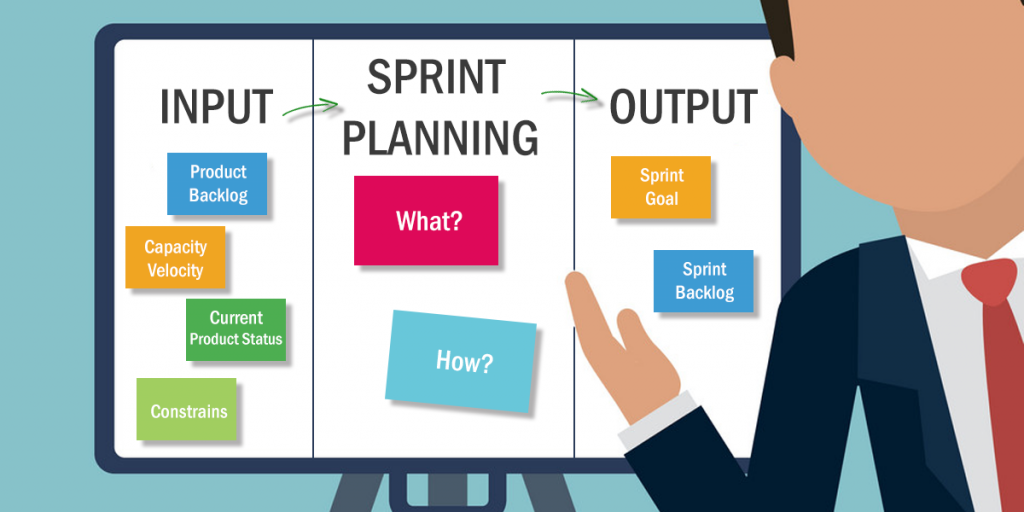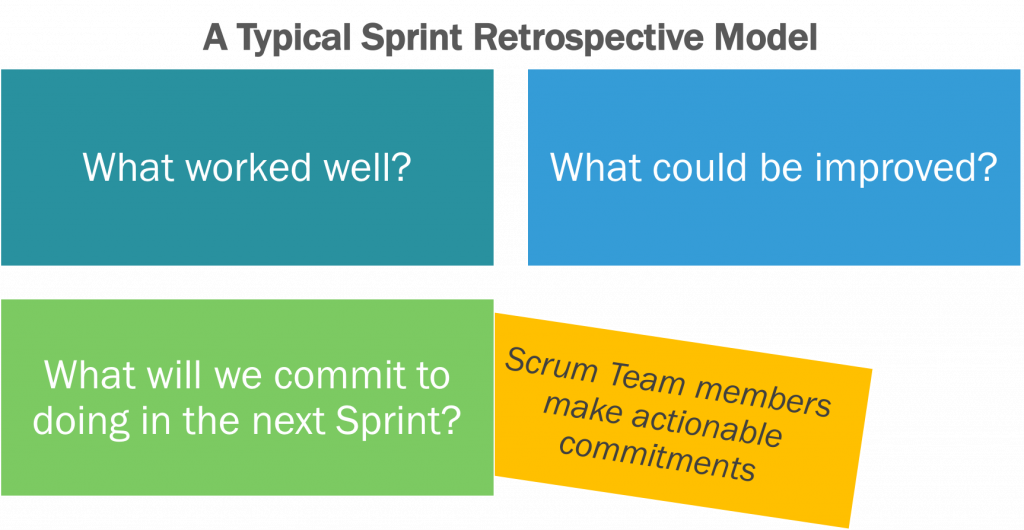
Working with a distributed team may be challenging because of communication issues and cultural differences. But in 2021, remote work has become a reality both in international corporations and local businesses.
Arranging remote work with a new team is not an easy task. It requires special skills and tools for maintaining the quality of a remote team’s work and to organize its working process according to geographical and cultural differences. Despite the challenges, the skill to coordinate the work of a remote team is essential for any manager or entrepreneur of the 21st century.
In this article, we will tell you about Agile and Scrum techniques for distributed team management and assessing the quality of their work.
The role of distributed teams in modern business
The majority of companies have already shifted to work with remote teams. It’s obvious that in the nearest future this trend is going to grow and here’s statistics that prove it:
- 16% of companies across the globe are fully remote
- 62% of employees from 22 to 65 say they work remotely at least occasionally
- By 2028, 73% of all departments are expected to have remote workers
- Upwork estimates that by 2025, 36.2 million Americans will work fully remote (while there were only 16.8 million before the pandemic)
Remote work positively affects the working environment and allows to increase the productivity of the workers and to reduce the operational costs in the company:
- 77% of remote workers say they’re more productive when they’re working from home
- 74% of people work remotely because there are fewer distractions
- Remote-friendly companies on average save $10,000 in profit per remote worker. The savings include lower costs for office rent, better productivity, and less turnover.
Agile project management for distributed team
The business world changes rapidly and requires the flexibility of the working processes. Under these conditions, the agile principles, such as being adaptive, collaborative, continuously learning, and self-management, help distributed teams to work more effectively, regardless of their geographical and cultural differences.
Particularly, scrum methodology can serve as a framework for structuring and managing the distributed teams.
Scrum for managing distributed teams
A scrum is a structured approach that unites the work of a development team, product owner, and scrum master. The first one unites the team with the customer and controls the product development. The latter helps to organize business processes: handles the meetings, solves immediate issues, motivates that team, and makes sure the team adheres to the scrum approach.
Scrum divides the working process into sprints. These are equal periods from a week to a month, depending on the project. The client and the team decide on the goals at the beginning of the sprint and strikes a balance at the end. Then a new sprint starts. It is convenient to compare the sprints and manage the efficiency of the work.
Sprint planning in Scrum
One of the most important activities in the Scrum methodology is sprint planning. The Product Owner, Scrum Master and the entire development team participates in this part of the process.
During the sprint planning meeting, the Product Owner describes the tasks with the highest priority. The team asks the questions that will help them to estimate and distribute the tasks over the entire Sprint period. Now let’s talk about the major stages of the Scrum sprints.
Step 1: Product backlog creation
Scrum product backlog is a list of desired features that derive from the product roadmap and requirements. Each of them contains a short description and a priority status. It serves as a connection between the Product Owner and the development team.
When the backlog is created, it’s important to keep it updated with the program. The Product Owner should review it before each sprint planning to actualize the prioritization according to the customer feedback and new requirements. Once the backlog grows larger, the Product Owner has to structure it by grouping the items into short-term and long-term ones.
Step 2: Sprint planning
In scrum, sprint is the period of time when the majority of work is done. Before you come to the actual work, you need to plan the sprint. It is important to define the sprint goal and your starting point as well as set the agenda and scope of tasks.
The Product Owner decides on the goal and the most effective strategy. The team needs to understand how they can achieve this goal, evaluate the tasks, and decide on the particular instruments that will be needed.

https://www.scrum.as/academy.php?show=0&chapter=24>Source
Another function of the sprint planning meeting is to motivate and challenge the team.
Step 3: Working on sprint
Here comes the actual development work that lasts for 2-4 weeks. During this period, the scrum master or project manager conducts daily stand-ups and weekly meetings to ensure that everything is going as expected.
Step 4: Testing and product demo
Once the development is finished, the product goes to QA engineers for performance testing and finding any possible issues. The development team fixes the bugs found and then the product goes to demonstration to the stakeholders. The scrum team members report regarding the progress of the sprint goal.
The demo is used for keeping the client updated regarding product development. It allows for feedback from the Product Owner and stakeholders as well as helps in backlog grooming and planning the next sprint.
Step 5: Retrospective and the next sprint planning
Scrum retrospective is the activity done at the end of the sprint that allows the team to analyze its work and to think on how to improve the next sprint performance. All of the scrum team is involved in retrospective.
- The goal is to improve the efficiency of work in the next sprint.
- The team analyzes how the last sprint was conducted in terms of the interaction of team members, processes, tools, etc. Depending on the project, the analyzed components might be very different.
- The scrum team members discuss the factors that affected the quality of the work and analyze their reasons, thinking over possible solutions. Constant improvement of the workflow is part of the process for managing risks in distributed teams.
- Based on the analysis, the team defines how they can improve the working processes. All the necessary changes are either implemented immediately or placed in the backlog of the next sprint.

When the sprint is finished, the team will come together to plan the next one according to the algorithm we just described.
The responsibility of managing a new team
To establish a successful collaboration, both parties should clearly know what are their work responsibilities. It is important to outline the expectations at the very beginning, regardless of remote or in-person work organization. To establish the area of responsibility between the team members, be able to answer the following questions:
- What are the responsibilities of the worker in this position?
- What are the biggest goals of the team for this month, quarter, and year?
- How will we measure the success of these goals?
If the team has clearer directions, the working process will be much more transparent. If you start working with an existing development team, take some time to standardize the roles and responsibilities for each person. Take notes and publish them in a Google folder or in an internal system like Asana where they will be visible to all parties. The document needs to be updated if any changes are made.
How to assess the quality of the distributed team’s work
Globalization, market expansion, and cost pressures were the major drivers of remote work development. In 2020, the COVID-19 pandemic has become a governing factor that forced thousands of companies to shift to remote work. In the following years, the trend of remote work is going to continue growing while businesses will have to adjust to accomplish their working processes.
Whether you work remotely or not, it is essential to assess the productivity of your team for business success.
Now, here are the basic principles of monitoring and improving the productivity of the distributed team. It was shown that remote work has a positive impact on productivity due to the decrease in the number of breaks needed and an increase in the number of minutes worked. 82% of the survey respondents confirmed that they are more productive when working remotely.
So, from the company’s point of view, it is important to correctly manage the remote workers in order to maintain this level of productivity. We will give you some tips:
Tip #1. Focus on results, not the number of working hours
Sometimes companies equate the number of hours spent in the working place with the quality of work. This is obviously the wrong point of view, both in the case of on-site and remote team members.
Each worker moves at their own pace and requires a different amount of time to complete the task. You needn’t worry that the employees will start and finish working at a different time or that they will work from the office, home, or co-working space. Instead, focus on the number of tasks completed and the quality of the work, regardless of the time on the time tracker.
Tip #2. Set clear objectives
The team needs to have clear goals in order to understand the path that they will be following. That is why you need to establish major objectives and break them into smaller pieces. Based on these milestones, the team understands the strategy of the product, their tasks, and why these tasks are important.
You can set the goals for everything: number of leads and sales, conversion rates, generated revenue, software performance, etc. All you need is to define the metrics, the way of achieving them, and discussing them with your team members.
Tip #3. Choose the right tools
It is impossible to work remotely without digital tools. So, you must create an infrastructure for communication, accessing the internal files, task management, and control of efficiency. There are plenty of tools that can be useful for you, so you just need to pick the most suitable ones.
Examples of distributed team management and communications tools:
- Video calling: Zoom, Skype, GoToMeeting
- Text messaging: Slack, Troop
- Scheduling: Google calendar, 10to8, Hypercontext
- Online collaboration: Google Drive, Basecamp,
- Task management: Asana, Jira, Trello, ProProfs Project, ProofHub
- Productivity: Krisp, Todoist
Tip #4. Give and gather feedback
This point will help you to improve the quality of your working process. This is a two-sided process: you give your team individual or collective feedback about their work and gather their opinion about the organization of the working process.
Having a system of constructive feedback is mutually beneficial for both the company and for the workers. By gathering feedback openly or through anonymous surveys, you understand the way your team works and find areas for improvement.
Establish the procedure of giving the team members feedback during monthly team meetings and one on one sessions. Encourage them to provide honest feedback and suggestions.
Conclusion
Remote work is the reality and future of the business in the 21st century. Despite all the challenges like time zone difficulties and the lack of personal communication, remote working is a win-win solution both for the customer and the software development company.
Having read this article, you are now familiar with instruments for remote team management and basic Scrum techniques that will help you in software development.
If you have any questions, or you want to implement any e-commerce project ideas, you are welcome to book a free consultation with our specialists.



